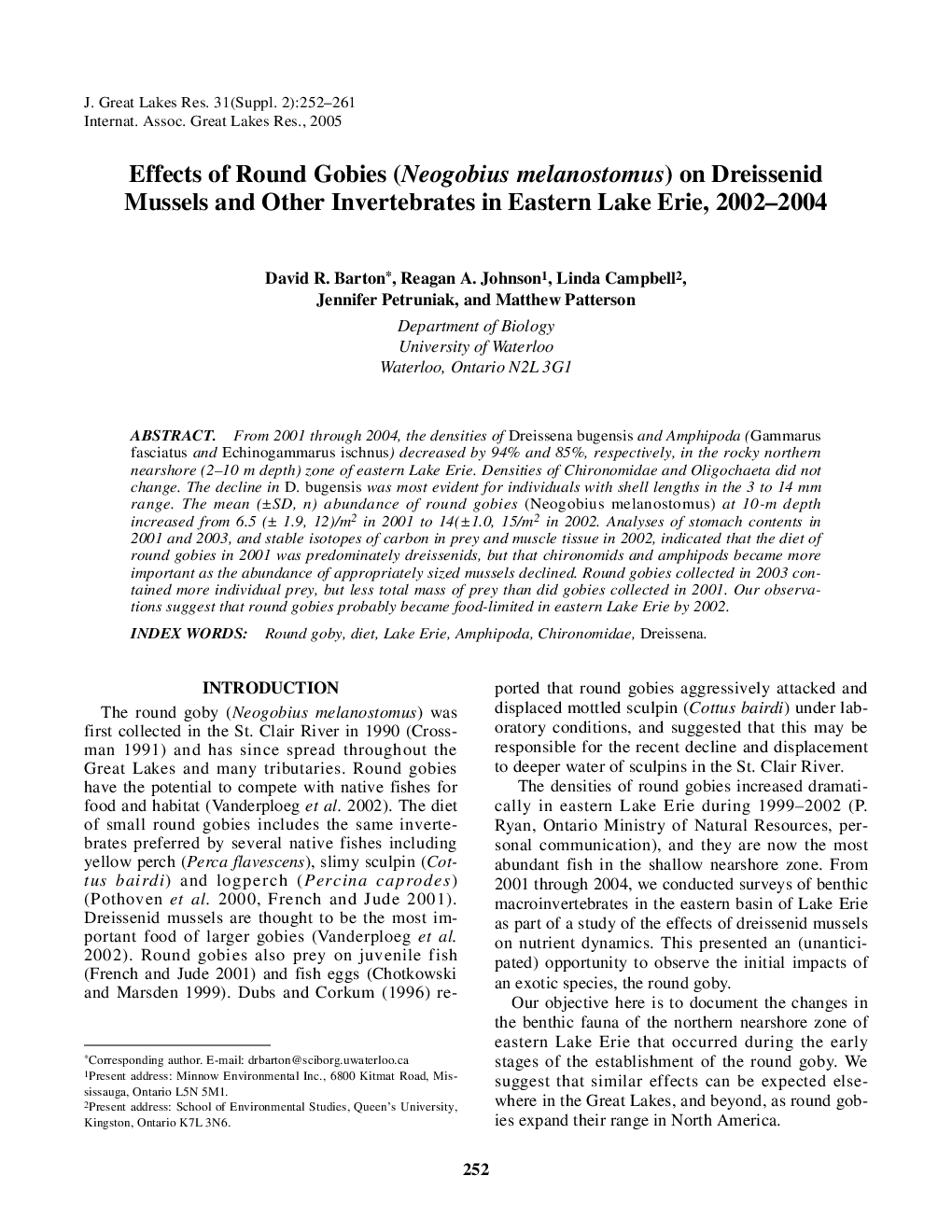| Article ID | Journal | Published Year | Pages | File Type |
|---|---|---|---|---|
| 9450253 | Journal of Great Lakes Research | 2005 | 10 Pages |
Abstract
From 2001 through 2004, the densities of Dreissena bugensis and Amphipoda (Gammarus fasciatus and Echinogammarus ischnus) decreased by 94% and 85%, respectively, in the rocky northern nearshore (2-10 m depth) zone of eastern Lake Erie. Densities of Chironomidae and Oligochaeta did not change. The decline in D. bugensis was most evident for individuals with shell lengths in the 3 to 14 mm range. The mean (±SD, n) abundance of round gobies (Neogobius melanostomus) at 10-m depth increased from 6.5 (± 1.9, 12)/m2 in 2001 to 14(±1.0, 15/m2 in 2002. Analyses of stomach contents in 2001 and 2003, and stable isotopes of carbon in prey and muscle tissue in 2002, indicated that the diet of round gobies in 2001 was predominately dreissenids, but that chironomids and amphipods became more important as the abundance of appropriately sized mussels declined. Round gobies collected in 2003 contained more individual prey, but less total mass of prey than did gobies collected in 2001. Our observations suggest that round gobies probably became food-limited in eastern Lake Erie by 2002.
Related Topics
Physical Sciences and Engineering
Earth and Planetary Sciences
Earth and Planetary Sciences (General)
Authors
David R. Barton, Reagan A. Johnson, Linda Campbell, Jennifer Petruniak, Matthew Patterson,
